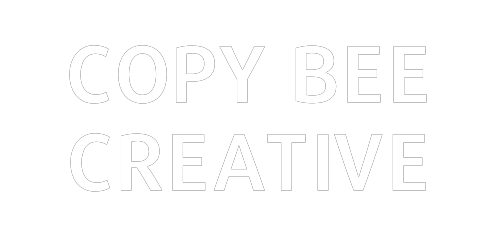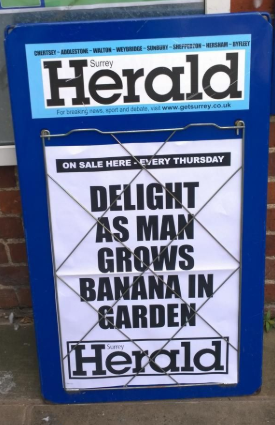The power of enticing headlines has been known, and exploited, since newspapers began to print. Since the digital explosion, a headline is created every time you hit publish on a blog, create a new landing page or share a link on social.
The big question is - are you making the most of your title?
Copywriting legend David Ogilvy once stated that five times as many people on average will read the headline as will read the body content – perhaps even more now with the number of places a piece of digital content can be found.
Yet many bloggers still treat the title as an after-thought and go with the first thing that comes into their head - not advisable!
Creating a bad title can let down your great content
A common problem amongst fledging blog writers and small business owners is creating an info-packed blog post that no one reads because of a badly worded headline. The internet is a cut-throat world of skim-readers – no prisoners are taken. If you’ve got this far, you’re doing well!
If the title doesn’t grab someone (metaphorically), or the first paragraph falls short of the interest mark, ALL users will be grasping for the back button no matter how good the rest of the piece is.
How do I know what a good headline looks like?
A quick Google search of “best headlines ever” tends to bring up a variety of funny, absurd and slightly bonkers titles.
Example - hmm interesting
Example - tongue and cheek
Example - too far?
A slightly deeper look into headlines unveils the examples that have categorical worked for a business, returning a measurable result - be it revenue or inbound enquiries.
In Victor Schwab’s fantastic book, ‘How to write a good advertisement’, he shares 100 examples of good headlines, containing some of the most successful ads in history.
Here are a few of the best headlines from Schwab’s book:
The secret of making people like you – surely you want to know what the secret is?
How to win friends and influence below – how to’s have a strong appeal and entice people to read on to get knowledge promised.
Six types of investors – which group are you in?
They laughed when I sat down at the piano – but when I started to play! – this example turns a negative into a positive, creating a before and after angle.
Now, all the above headlines are decades old and were written way before the internet was even conceived (the piano headline was written in 1926!). But they all contain evergreen learning points for you to incorporate into your blog post titles to get users to read on.
Written in 1926 by John Caples - one of the most famous advertising headlines ever written
3 tips to create an enticing title
1) The 4 U Formula (try to include at least 2)
Sharpened in the advertising heartlands of the USA by Michael Masterson, these 4 elements will help you to produce a powerful headline. Treat this almost like a checklist the next time you come to write one.
Useful – how is the article going to be useful to the reader should they invest the time in reading it? What do they get out of it? It might address a problem or help to solve a customer pain point. This will compel the reader to carry on reading.
Ultra-specific – this is about giving the details. If you’re are too general, your headline isn’t going to attract anyone. This may be a number of steps to do something or specific insight related to the content. It’s going to make your headline more believable and help to urge the right type of reader (not just any) to read on.
Unique – a unique approach offers a surprise factor. It makes the reader sit up and take note. If they’ve seen the same headline somewhere before, it’s going to look tired and uninteresting. Try adding a bit of emotion or something unusual. Instead of 10 top tips, how about 9?
Urgent – usually used more in advertising or email subject lines, urgency can still play an important role in headline crafting. It might be used to persuade the user to solve their issue faster or take action sooner. Imagine your content is the pain relief to the problem – who doesn’t want to get rid of the headache sooner rather than later? Do you want to Increase Your Traffic by 30% or Increase Your Traffic by 30% Right Now?
Be sure to include at least one of these U’s in your headline. The more you can fit into your headline the more compelling it’s likely to be.
2) Make sure your headline contains a benefit
This relates to the useful element of the 4 U’s. If there isn’t some kind of benefit to the user – knowledge, information or value – what’s the point in reading it?
By promising a benefit in the headline you’re urging the reader to take action. If they don’t carry on reading they might be missing out on something, and everyone hates FOMO (the fear of missing out).
Sometimes a benefit may be implied within the headline. This only works if your audience is knowledgeable and in sync with the type of services or products you deal with.
Going further, it’s vital that your content delivers on the benefit-driven promise of your headline. If not you risk being branded as a ‘clickbait merchant’, which can have negative consequences for your trust and authority in the eyes of potential customers.
3) Write more than one version
Create multiple versions of a headline to see which sounds the most effective. Test it on a few people. What sounds genius to you might not be your target audience’s cup of tea. Don’t just go with the first title that comes into your head. As Hemingway once said (allegedly), “the first draft of anything is shit”.
Some of the best copywriters in history would spend hours, even days, coming up with the greatest possible headline. You may have heard about the 50:50 rule – this suggests spending the same amount of time on your headline as you do on writing the main body content.
Wordsmithing also includes trying to get the keyword closer to the start of the title. This helps with your SEO (Search Engine Optimisation) and can also make it more specific. You might want to start with a verb to stimulate action and tick off the urgency box. Assess your other headlines to see which ones have worked well in the past.
Wrap up
Crafting an irresistible headline certainly takes time, focus and effort - but it will pay off. It will get more people to actually read the content you’ve spent so long working on, as well as helping your business to resonate more successfully with the prime audience of the piece.
Featured image credit, also quite a funny read - https://www.joe.co.uk/life/british-local-news-headlines-that-are-just-sensational-76865






